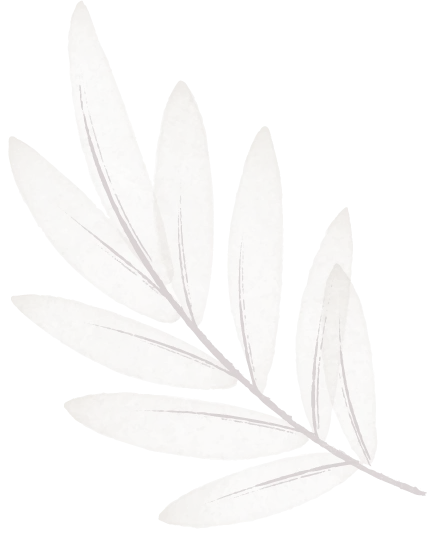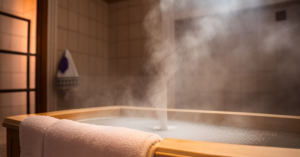
News

The Traditional Moroccan Bath: A Luxurious Cleansing Ritual for Mind and Body

Introduction
The Traditional Moroccan Bath, or "Hammam," is more than just a bath—it's an age-old ritual deeply rooted in Moroccan culture, offering a rejuvenating experience for the body and soul. For centuries, people have sought the purifying and therapeutic benefits of the Moroccan bath to cleanse the skin, detoxify the body, and achieve deep relaxation. In this article, we will explore the history, benefits, and step-by-step process of the Traditional Moroccan Bath, along with tips on how to make the most of your spa experience.
What is the Traditional Moroccan Bath?
A Traditional Moroccan Bath is a cleansing and detoxifying ritual that originated in Morocco and has spread throughout the Middle East and North Africa. The Hammam is usually a warm, steamy room where the skin is softened, dead skin cells are removed, and the body is thoroughly cleansed. This unique experience combines relaxation with the natural benefits of traditional Moroccan ingredients like black soap and Rhassoul clay.
A Moroccan Bath is not only a way to cleanse the body but also a social tradition where friends and family gather in public bathhouses to relax and connect. Today, many spas offer luxurious private Hammam experiences, allowing individuals to enjoy the many benefits in a more intimate setting.
Benefits of the Traditional Moroccan Bath
1. Deep Cleansing and Exfoliation
One of the primary purposes of the Traditional Moroccan Bath is to deeply cleanse the skin. Using black soap, the therapist gently exfoliates the skin to remove dead skin cells and impurities. The result is smooth, radiant skin with improved texture and tone.
2. Detoxification
The heat and steam of the Hammam help to open up the pores, allowing toxins to be flushed out of the body through sweat. This detoxifying process improves circulation, helping the body rid itself of harmful substances. Regular Moroccan baths can boost the immune system and promote overall well-being.
3. Stress Relief and Relaxation
The soothing warmth of the Moroccan bath, combined with the steam, offers an unparalleled relaxation experience. The environment allows your body to unwind, reducing tension in the muscles and calming the mind. A Traditional Moroccan Bath can be a sanctuary for those seeking mental clarity and a break from daily stress.
4. Improved Circulation
During the Hammam, the steam encourages blood vessels to dilate, which improves circulation throughout the body. This increased blood flow helps deliver essential nutrients to the skin and muscles, improving their overall health and vitality.
5. Enhanced Skin Health
Traditional Moroccan ingredients such as black soap, Rhassoul clay, and argan oil are rich in vitamins and minerals that nourish the skin. Black soap, made from olives, softens the skin while deeply cleansing it. Rhassoul clay, mined from the Atlas Mountains, is packed with magnesium and silica, which rejuvenate and restore skin health.
The Process of a Traditional Moroccan Bath
Here’s what to expect during a Traditional Moroccan Bath:
1. Warming the Body in the Steam Room
The experience begins in a steam room where you sit and allow the heat to soften your skin and open your pores. The steam helps relax your muscles and prepares your body for the cleansing ritual. Spending 10-15 minutes in the steam room maximizes the benefits of the treatment.
2. Application of Black Soap
Once your skin is ready, the therapist will apply a layer of traditional black soap, also known as "Beldi soap." Made from olives and rich in vitamin E, this soap helps cleanse and soften the skin. After a few minutes, your body is fully prepared for exfoliation.
3. Exfoliation with Kessa Glove
After the black soap has done its work, the therapist uses a special exfoliating glove called a "Kessa" to scrub the entire body. This process removes dead skin cells and impurities, leaving your skin smooth and refreshed. You may notice visible rolls of dead skin being sloughed off during this part of the bath.
4. Rinsing and Rhassoul Clay Application
Following the exfoliation, your body is thoroughly rinsed with warm water. Next, Rhassoul clay, which is rich in minerals, is applied to your skin. The clay helps to draw out toxins, purify the skin, and enhance its elasticity. Once the clay has been applied, it is left on the skin for a few minutes before being rinsed off.
5. Moisturizing with Argan Oil
After the deep cleansing and detoxifying treatments, your skin is ready for hydration. Argan oil, known for its moisturizing and anti-aging properties, is massaged into the skin to lock in moisture and leave you with a radiant glow. Argan oil is rich in antioxidants and essential fatty acids, making it an excellent choice for nourishing the skin.
How to Maximize the Benefits of Your Moroccan Bath
1. Stay Hydrated
Before and after the Hammam session, it’s essential to drink plenty of water to stay hydrated. The heat and steam will cause you to sweat, which can lead to dehydration if not replenished.
2. Regular Sessions
To fully enjoy the benefits of the Traditional Moroccan Bath, it is recommended to have sessions regularly. Whether you visit once a month or every few weeks, consistent treatments can lead to improved skin health and overall well-being.
3. Relax and Unwind
During the Hammam, take the opportunity to relax and let go of any stress or tension. Focus on the soothing warmth of the steam and the calming effects of the treatments to fully embrace the rejuvenating experience.
Conclusion
The Traditional Moroccan Bath offers a unique and luxurious way to cleanse the body, relax the mind, and rejuvenate the skin. With its blend of natural ingredients, exfoliation techniques, and centuries-old traditions, the Moroccan bath is a deeply nourishing ritual that promotes both physical and mental well-being. Whether you're seeking deep relaxation, detoxification, or glowing skin, a visit to the Hammam is an unforgettable experience that will leave you feeling refreshed and revitalized.